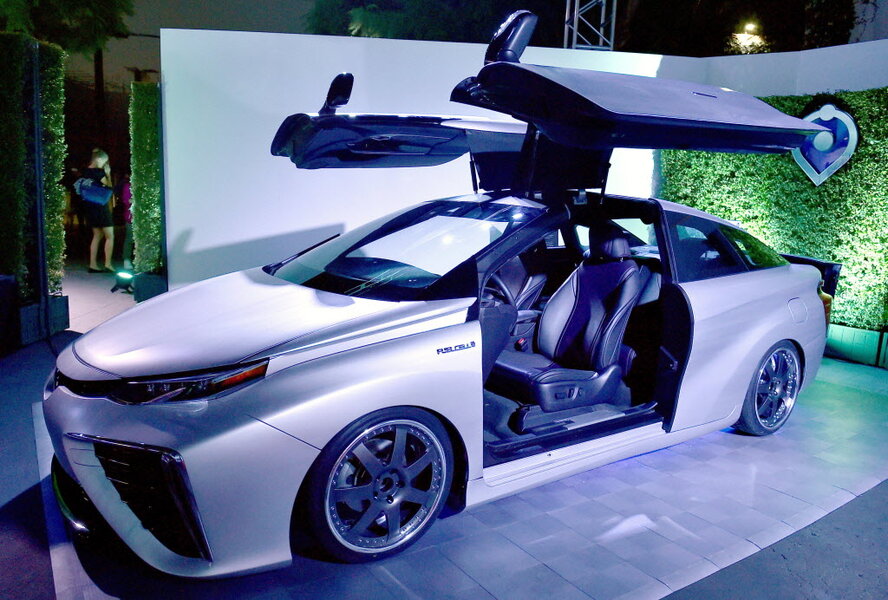Will South Korea lead the way with its ambitious fuel cell project?
Loading...
With the aim of reducing rising greenhouse gases and limiting the use of conventional fossil fuels, the world is slowly but steadily taking note of alternative sources of energy that are not only efficient but increasingly cost-effective. Fuel cells are one such alternative source of energy that is quickly gaining worldwide acceptance and there have been several high profile developments in this market recently, especially in Asia.
As reported this week, China’s Tangshan Railway Vehicle Co ( TRC) has signed a $2 million agreement with Ballard Power Systems to develop fuel cell-powered trams by 2016. In addition, Connecticut-based Doosan Fuel Cell America (previously Clear Edge Power, before South Korea’s Doosan acquired it) announced a deal to manufacture and supply 70 fuel cells that would generate close to 30.8 MWs of clean energy for a new residential complex in Busan, South Korea.
According to the new deal, Samsung C&T Corp would act as an EPC (Engineering Procurement and Construction) contractor while Korea Hydro & Nuclear Power (KHNP) would share the ownership of the fuel cells along with Busan.
Fuel cells are electrochemical devices that generate electricity without combustion. The fuel cell industry has today found acceptance in applications related to hospitals, universities, water resource recovery, supermarkets, office and commercial buildings.
Companies like Walmart, Coca Cola, Verizon and Google are already using stationary fuel cells in their establishments. South Korea has been an emerging market for stationary fuel cells where installations are nearing almost 300 MW. Fuel Cell Companies like Doosan, Fuel Cell Energy (another Connecticut based company), Bloom Energy, LG Fuel Cells, and GE Fuel Cells have now set their sights on the South Korean market.
What makes the current Doosan deal significant is the fact that the 70 fuel cells, or ‘power plants,’ would provide power to around 71,500 Korean residences. The fuels cells would be stacked on a multistory structure that would only occupy around 1 acre of land. When compared to solar panels, which require more than 200 acres to generate equivalent power, this requirement would be minimal and would in fact save a lot of infrastructure costs.
“The 'Busan Green Energy Project' illustrates how companies can collaborate to create and implement a plan that minimizes harmful greenhouse gas emissions and moderates everyday energy costs. We’ve developed the largest urban fuel cell site in Korea and the largest PAFC (phosphoric acid fuel cell) generation project in the world, reinforcing the fact that fuel cells are the premier clean energy alternative in large cities,” said Jeff Chung, CEO and President of Doosan, who considers this a ‘landmark agreement’ with respect to its power output, size and partnership.
Doosan is planning to ship its 70 units of Pure Cell Model 400 ‘power plants’ by August of 2016. With this deal, Doosan will have a total of seven projects in South Korea and would be responsible for generating around 45 MW of electricity through them.
The Korean government is now offering incentives and creating policies to promote the use of fuel cells in the country. The Korean government has even declared its goal of achieving around 11 percent of its energy from renewables and other new sources of energy by the year 2035, and fuel cell technology is one of the listed ways to achieve this goal.
In fact, South Korea’s capital Seoul has set a goal of producing 50 percent of its renewable electricity from fuel cells by the year 2030. According to one of the government’s policies, any power utility that generates more than 5,000MW has to produce almost 1,000 MW of electricity from renewable sources by 2022.
With zero combustion, almost no emissions and limited use of land, traditional utilities in South Korea are beginning to realize that fuel cells are an attractive option even when compared with solar and wind energy, as they hope to improve economies of scale in the next few years. It is hardly surprising that South Korea has quickly emerged as one of the most attractive investment destinations for North American fuel cell manufacturers.
Source: http://oilprice.com
Original article: http://oilprice.com/Alternative-Energy/Fuel-Cells/Korea-Leading-The-Way-With-Ambitious-Fuel-Cell-Project.html





